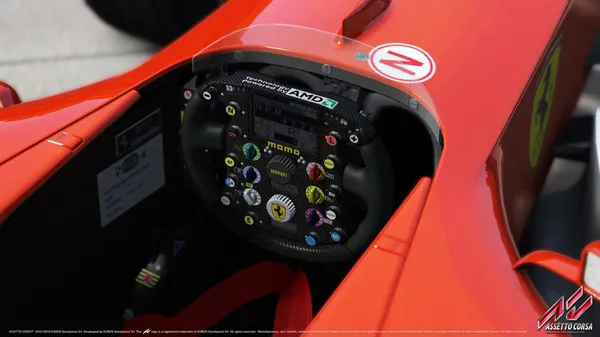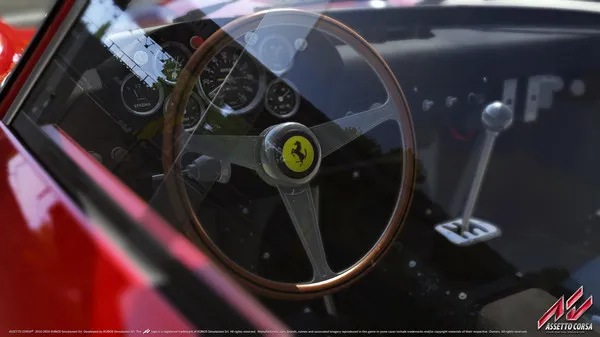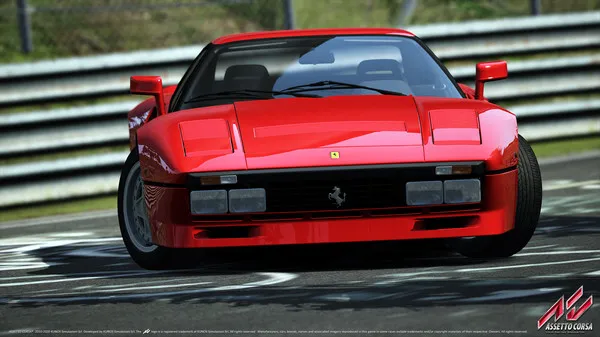Introduction The Ferrari 70th Anniversary Pack for Assetto Corsa was released with high expectations. Celebrating seven decades of Ferrari excellence, the DLC includes seven iconic models ranging from the 250 GTO to the LaFerrari Aperta. While the pack delivers stunning visuals and authentic engine sounds, one issue has consistently surfaced among sim racers: handling inconsistency. Despite being developed by Kunos Simulazioni with real-world data and Ferrari’s collaboration, several cars in the pack exhibit unpredictable or unrealistic handling behavior. This article explores the root causes, technical implications, and community feedback surrounding this issue, offering a structured analysis across ten key areas.
- Overview of the Ferrari 70th Anniversary Pack The pack includes seven Ferrari models: 250 GTO, 312/67, 330 P4, F2004, 288 GTO, FXX K, and LaFerrari Aperta. Each car represents a milestone in Ferrari’s history, showcasing different eras of engineering and design philosophy.
While the visual fidelity and sound design are universally praised, the driving experience varies dramatically. Some cars feel planted and responsive, while others suffer from twitchy oversteer, vague feedback, or excessive understeer. This inconsistency has sparked debate among players and modders.
Included Cars:
- Ferrari 250 GTO (1962)
- Ferrari 312/67 (1967)
- Ferrari 330 P4 (1967)
- Ferrari F2004 (2004)
- Ferrari 288 GTO (1984)
- Ferrari FXX K (2015)
- Ferrari LaFerrari Aperta (2016)

- The Physics Engine and Its Limitations Assetto Corsa’s physics engine is built on real-world telemetry and tire models. However, simulating vintage cars like the 250 GTO or 312/67 introduces challenges. These vehicles lack modern suspension geometry and downforce, making them harder to model accurately.
The engine also struggles with high-downforce cars like the F2004 and FXX K. Players report excessive grip at low speeds and sudden loss of traction at high speeds—suggesting that the aero model may not scale correctly across different car types.
Physics Challenges:
- Limited data for vintage cars
- Aero modeling inconsistencies
- Tire behavior under extreme loads
- Tire Model Discrepancies One of the most cited issues is the tire model used across the pack. Assetto Corsa’s tire simulation includes temperature, pressure, and wear dynamics. However, the same tire logic applied to vastly different cars can produce unrealistic results.
For example, the 330 P4 feels floaty and disconnected, especially on modern tracks. Meanwhile, the FXX K exhibits snap oversteer despite having advanced traction control. These behaviors suggest that the tire compound and carcass stiffness may not be properly tuned per vehicle.
Tire Model Concerns:
- Inconsistent grip levels
- Unrealistic heat buildup
- Poor feedback under lateral load
- Suspension Geometry and Setup Defaults Suspension setup plays a critical role in handling. Assetto Corsa allows adjustment of camber, toe, dampers, and ride height. However, the default setups for several Ferrari cars are poorly optimized.
The 288 GTO, for instance, has excessive rear toe-in and soft dampers, causing instability under braking. The 312/67 suffers from bump steer and unpredictable rebound behavior. These issues can be mitigated with custom setups, but many players rely on defaults.
Setup Issues:
- Poor baseline configurations
- Excessive toe or camber angles
- Inadequate damping for track conditions
- Aerodynamics and Downforce Modeling Modern Ferraris like the FXX K and LaFerrari Aperta rely heavily on active aerodynamics. Assetto Corsa simulates downforce based on speed and wing angle, but active aero systems are simplified or static in the game.
This leads to unrealistic cornering behavior. The FXX K feels glued to the road at low speeds but loses stability in high-speed sweepers. The LaFerrari Aperta’s DRS system is underutilized, affecting straight-line balance and braking zones.
Aero Limitations:
- Static wing modeling
- Poor DRS integration
- Downforce not scaling with speed

- Electronic Aids and Their Implementation Ferrari’s modern hypercars feature advanced traction control, ABS, and torque vectoring. Assetto Corsa includes basic electronic aids, but their implementation is inconsistent across the pack.
The F2004’s traction control feels binary—either fully active or completely off. The LaFerrari’s ABS pulses too aggressively, reducing braking efficiency. These behaviors suggest that the electronic logic doesn’t reflect real-world calibration.
Electronic Aid Flaws:
- Overactive ABS modulation
- Traction control lacks finesse
- No torque vectoring simulation
- Track Compatibility and Surface Feedback Handling issues are exacerbated by track selection. Vintage cars like the 250 GTO perform better on classic circuits like Monza 1966, while modern cars struggle on bumpy or narrow layouts.
Surface feedback also varies. The 312/67 feels disconnected on laser-scanned tracks due to its rigid suspension. Meanwhile, the FXX K’s feedback is muted on high-grip surfaces, making it harder to judge corner entry.
Track-Handling Interactions:
- Poor surface feedback for vintage cars
- Aero cars struggle on narrow layouts
- Suspension not tuned for modern curbing
- Community Feedback and Modding Solutions The Assetto Corsa community has responded with custom setups, physics tweaks, and even reworked versions of the Ferrari pack. Modders have adjusted tire compounds, suspension geometry, and aero maps to improve realism.
Some players use third-party apps like Sidekick or ACTI to monitor telemetry and adjust setups accordingly. Others replace default physics files with modded versions that better reflect real-world behavior.
Community Fixes:
- Custom suspension setups
- Reworked tire physics
- Modded aero maps and balance
- Console vs. PC Experience Handling inconsistencies are more pronounced on consoles. The Ferrari 70th Anniversary Pack was ported to Xbox One and PS4, but players report input lag, reduced FFB fidelity, and missing setup options.
PC users benefit from Content Manager, telemetry apps, and modding tools. Console players are limited to default configurations, making it harder to correct handling flaws or optimize performance.
Platform Differences:
- Limited setup options on console
- Reduced FFB resolution
- No access to modding tools

- Developer Response and Future Updates Kunos Simulazioni has acknowledged some handling issues but has not released targeted updates for the Ferrari pack. Their focus has shifted to Assetto Corsa Competizione and future projects.
Without official patches, the community continues to refine the experience through mods and shared setups. However, the lack of developer support leaves many players frustrated, especially those who purchased the pack expecting factory-level accuracy.
Developer Status:
- No recent updates for Ferrari pack
- Focus shifted to Competizione
- Reliance on community for fixes
Conclusion The Ferrari 70th Anniversary Pack for Assetto Corsa is a celebration of automotive excellence—but its handling inconsistencies undermine the experience. From tire model flaws to aero misbehavior, each car presents unique challenges that require setup tweaks or modding intervention. While the community has stepped up with solutions, the lack of official support leaves the pack feeling unfinished. For sim racers seeking authenticity, understanding and correcting these issues is essential to unlocking the true potential of Ferrari’s legacy.

















